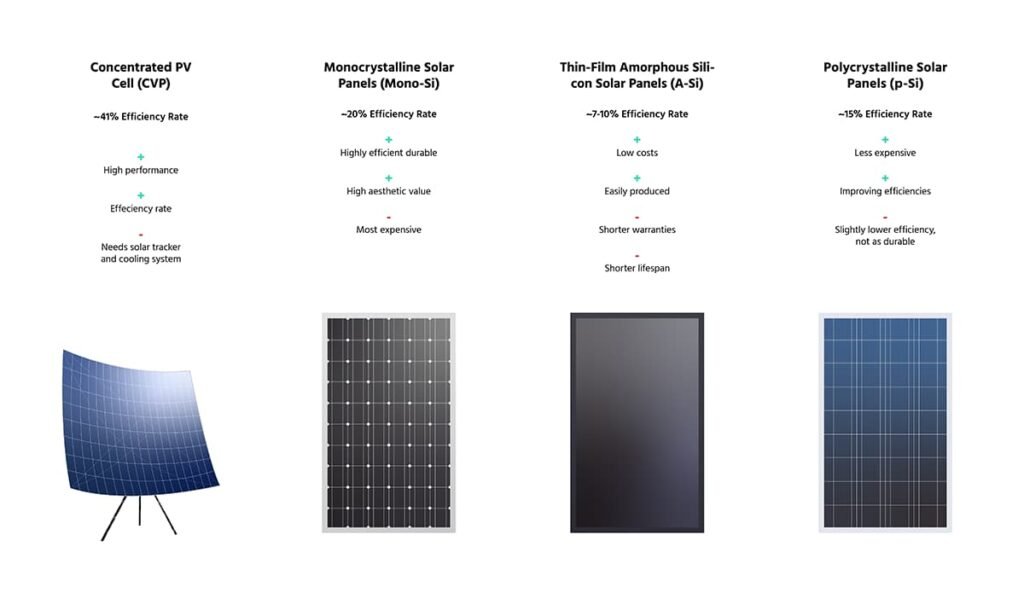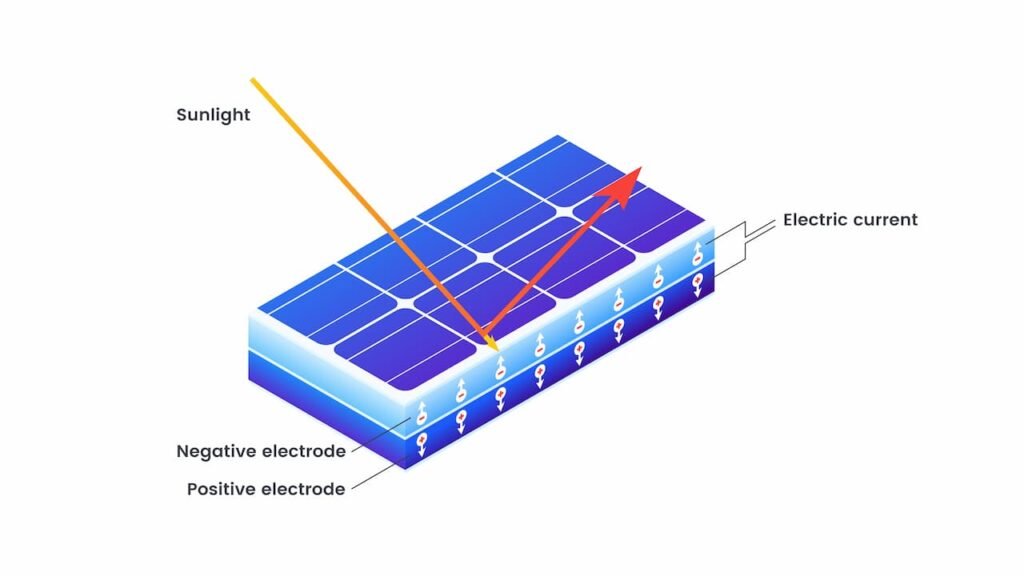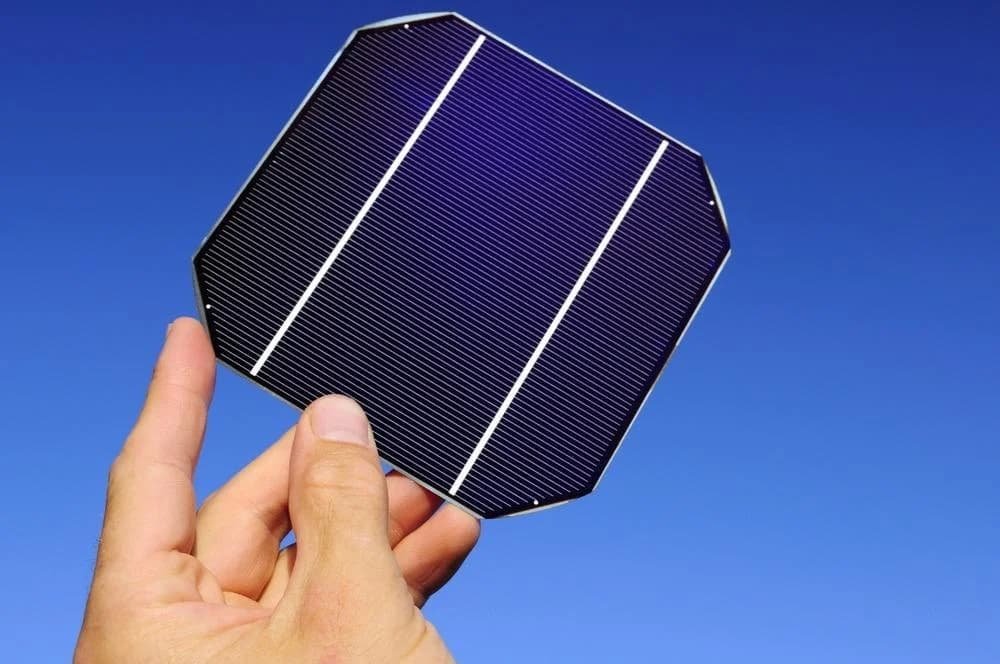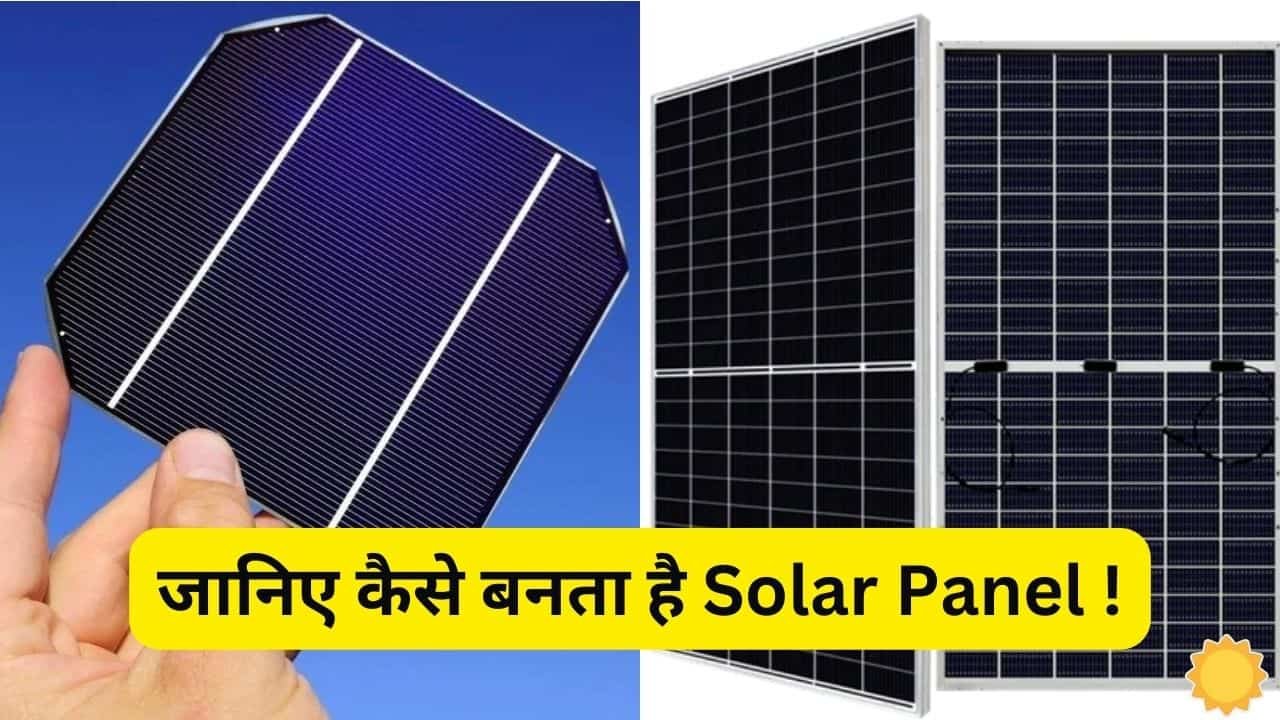Welcone To PM Surya Ghar Yojana Muft Bijli Yojana
Know which materials are used in making solar panels.
Due to the increasing use of renewable energy sources, solar energy is the most popular method emphasized. Solar energy uses the abundant energy of the sun and solar panels convert this solar energy into electrical energy. Many people are not familiar with the detailed materials in solar panels. In this article we will talk about the materials used in solar panels used in their production.
Solar panels are devices that convert sunlight into electricity. These contain solar cells that are also called photovoltaic cells. They generate electricity through photovoltaic effects. When sunlight falls on these cells, electrons are released that generate electric current.
Materials used in solar panels
1.Silicone

polycrystalline silicon: The efficiency of these cells is low and that is why they are cheaper. These are the most commonly used types of solar cells.
monocrystalline silicon: These cells offer high efficiency and can convert sunlight into electricity. They are also more expensive due to their higher efficiency.
2. Amorphous Silicon (A-Si)
It is also called non-crystalline silicon and is used in thin-film solar panels. These panels are multifunctional and cost-effective, but they are more prone to breakage and damage. To improve the performance and longevity of these panels, variants such as A-Si carbide, A-Si germanium, microcrystalline silicon and A-Si nitride are used.
3. Cadmium telluride (CdTe)

CdTe consists of cadmium and tellurium and is used in thin-film panels to achieve optimal bandgap efficiency. These cells are cost-effective and known for their stability.
4. Gallium arsenide
Solar panels that use gallium arsenide offer higher efficiency, a thinner profile and a lower density than silicon cells, making them a good alternative to traditional silicon cells.
5. Aluminum, antimony and lead
The energy band gap of solar cells can be improved by combining silicon with metals such as aluminum, antimony and lead. These alloys are used to make multi-junction solar cells, increasing efficiency and thermal management.
6. Carbon Nanotube (CNT)

CNTs are nanomaterials that improve the properties of solar panels. They help develop transparent conductor materials and improve power flow, converting up to 75% of solar energy into electrical energy.
Also see: Know 5 misconceptions regarding solar panels
